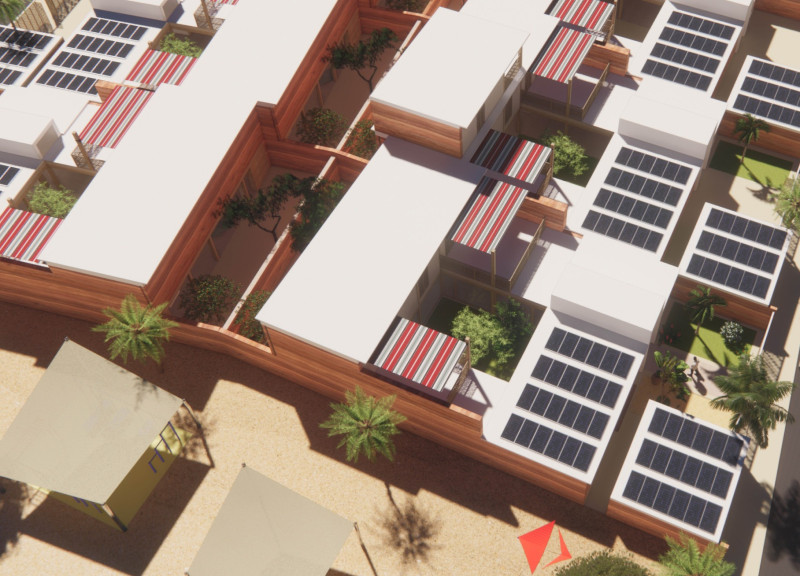5 key facts about this project
The project represents a harmonious blend of form and function. It is designed to accommodate [specify functions like residential living, commercial activity, public gathering], ensuring that it meets the diverse needs of its users. The spatial organization is meticulously planned, allowing for an easy flow between different areas, thereby fostering an inviting atmosphere that encourages interaction among occupants. The careful consideration given to user experience is evident in the thoughtful placement of spaces, light access, and the overall sense of openness that permeates the design.
A key element of the project is its facade, which combines both contemporary architectural elements and traditional materials. This choice reveals a deep respect for the local context while also pushing forward with modern expressions. The facade may utilize a combination of glass and natural materials such as timber or stone, creating a visually engaging exterior that reflects changing light throughout the day. This interaction with natural light not only enhances the aesthetic quality but also minimizes the reliance on artificial lighting—a conscious move towards sustainability.
The project's unique design approaches include its emphasis on sustainable practices. Elements such as green roofs and rainwater harvesting systems have been thoughtfully incorporated, aligning the architecture with current environmental standards. The use of energy-efficient materials and systems demonstrates a commitment to minimizing the building's ecological footprint. Additionally, incorporating passive design strategies helps regulate temperatures naturally, reducing energy consumption and promoting a healthier indoor environment.
Inside, the layout is characterized by open spaces that facilitate versatility in use. The interior design thoughtfully utilizes materials that echo the exterior, creating a sense of continuity throughout the building. Functionality is prioritized in the arrangement of rooms, accommodating various activities without compromising comfort or accessibility. Flexible spaces can be adapted for different uses over time, underscoring the project’s commitment to longevity and adaptability in an ever-evolving urban context.
Attention to detail is another hallmark of this project. Features such as [mention specific design details like unique fixtures, integrated technology, or bespoke furniture] illustrate a keen understanding of how small elements can contribute to the overall narrative of the design. The interaction between different materials and textures enriches the experience of moving through the space, while carefully selected furnishings and finishes are chosen to enhance the functionality of the spaces.
The landscaping surrounding the architecture further complements its design ethos. Thoughtful integration of native plants not only beautifies the environment but also supports local biodiversity. The landscape invites occupants to engage with nature, promoting outdoor activities and social interactions within a carefully curated environment.
This project ultimately demonstrates how modern architecture can successfully navigate the balance between innovative design and responsibility to place and community. The unique characteristics and design approaches employed contribute to a project that is both functional and reflective of its context.
For those interested in exploring this project further, details such as architectural plans, architectural sections, and various architectural designs reveal even more about the intricacies of the design. Delving into these architectural ideas offers a comprehensive understanding of how the project engages with its environment and the philosophy behind its development.


























